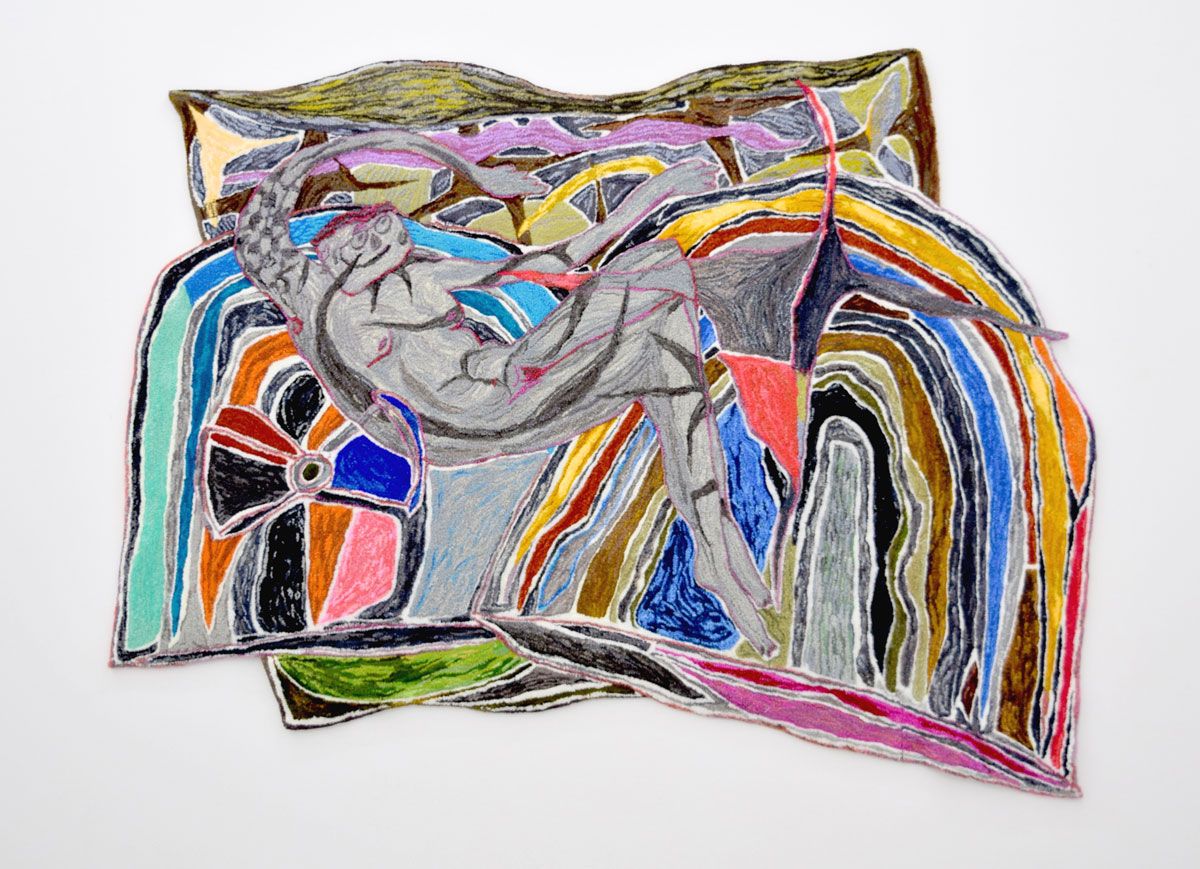The weight of dust. The tasteless, lingering sensitivity of the mouth after hot tea. The faint haze of late summer sky. Secretly Living explores a peculiar side of isolation, reflecting on permanence, repetition, and the impact of time.
//
Nestled anonymously between nondescript buildings in the Downtown Eastside, Afternoon Projects presents Secretly Living, the latest exhibition from Toni Tongyu Zhao. Secretly Living feels a bit like entering the mind of a motivated five-year-old who has snuck into the arts and crafts box at school — the big box with loose sequins rustling about the bottom, a mess of pastel-rainbow yarn tangled about three broken popsicle sticks, and dried (possibly chewed on) pens. Though Toni’s works vary in form, all celebrate colour and texture. A childlike excitement brings vibrancy and curiosity to her pieces. They make you smile like you’re rediscovering an old picture book or lunchbox snack.
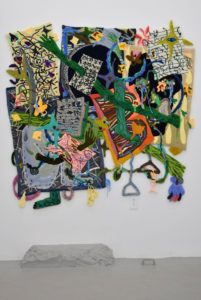
And yet as I walk around, something unsettling brews in the background. Like nostalgia, but less fondly bittersweet, less distant, more active. Despite the faux-kindergarten styling, her art feels aged, tired, complicated. The works speak to something sensitive. Think of the pointed look of understanding two adults share above a child’s head. Irked and not oblivious, the kid picks up on more than the adults intend, though not enough to be in-the-know. Aware yet confused, frustrated and uncertain. The feeling settles above, around, and within, like a scentless odour or high-pitched hum — the weight of empty memory.
This not-quite nostalgia leaks out through the symbolism of the materials used. One piece proudly incorporates an overused personal washcloth of Toni’s, while another lists ‘domestic dust and stains’ in the used materials description tag (I am tempted to misname this ingredients list, as though planning a mud slop potion — surely I’m not the only kid to have done this?!) For Toni, the stories that inanimate objects hold tell us more about ourselves than we’d like to admit. Secretly Living explains this with glitter glue and buttons and smudges and sequins, hair ties and loose thread and felt tip pens.
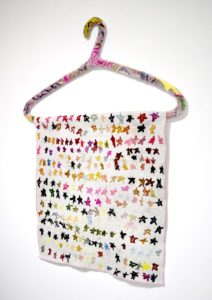
Toni makes it impossible to separate the visual piece from the material process behind its creation. Though by no means required, knowing how something came to be usually changes how art is appreciated. During a museum tour, a curator of rare pigments might get flustered at blue pottery glaze, while the reluctant preteen on a family outing sees the uninspired shape of a not-even-that-old clay jug and glazes over. A toddler could discover Grandma’s Baoding Balls, emptying the fabric box to clang the pretty shiny orbs together, giggling as they ring and chime and roll around the floor, while a cloisonné craftsperson watches in horror. Of course, there are no required pre-readings to enjoy art, but knowing context often adds to my sense of wonder. Toni’s work stands out here — she does not separate the finished piece from the material origins. Understanding where the piece came from is not optional. Her work demands consideration of the construction, of the origin, of the past. The beauty of the piece draws from how and why it came to be.
Entering the space, two thick hand-sewn carpets take proud center of attention — ‘Work with the ambition to work with the ambition to work (apply now)’ and ‘Floating Between Cut Open Mountains.’ I am grounded in awe at the thought of the mechanical perseverance, the time involved. It reminds me of how I felt when first encountering Yayoi Kusama’s infinity net paintings, with their dizzying overwhelming repetition. With obsessive, hyper-focused diligence, both carpets took dedication and commitment.
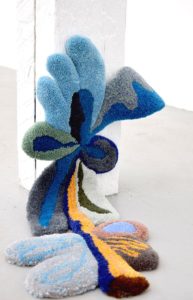
The title, ‘Work with the ambition to work with the ambition to work (apply now)’ itself causes one to rethink in circles. Standing in front of the wall-mounted rug, the same is true about the piece. You notice something new with every fresh look. Though working with wool, tufted and softly frayed, the design of the piece is sharp and integrates all sorts of characters. Jumping out at me I notice scrap refill paper, stray limbs, vines, neurons, fingernails, coiled hair, flowers, droplets of custard (or tree sap?), coat hangers, gummy worms, and a carpet’s take on static electricity. It reminds me of a playmat and a cell diagram at the same time, systematically jumbled and busy. Within this mix of imagery, I feel like I am missing something obvious, like the focal point is eluding me. I look further, discover curious details, hoping ‘the point’ will jump out. I’m left lost. Yet in my search, I have appreciated more of the piece’s intricacies that would have gone unnoticed had I simply felt content to move on. It is here that Secretly Living exposes the root of its perturbed nostalgia. When I view the piece as a whole, I cannot find its meaningful ‘purpose’. I must appreciate it’s specific moments individually in order to find their holistic collective special.
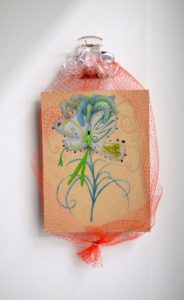
Secretly Living hones in on life’s small, quiet moments, revealing their weirdness. Toni explores indignity and innocence, afterthoughts and mindlessness. Filled space plays witness to life. More than this, our daily objects reflect stories back at us. ‘Haunted’, they carry life’s ghosts, the stained imprint of overlapping moments. While the sun bleaches colour from cushions, as the skirting boards split as the house frame slowly warps, daily objects collect proof of the passing of time on a more immediate scale. The day-to-day doing of life is recorded in our doormats and blunted knives and unsqueezed sponges (I’m looking at you, flatmates). Marked by each encounter, eventually, like stalagmites or tree rings, the nicks and stains will show proof of a story without explaining the details.
Toni investigates the uncelebrated, routine parts of life, skirting around existentialism yet not quite landing in any comforting conclusion either. She is not consoling our forlorn isolation. Cracking the surface of new-age loneliness, comfort, monotony, and privacy, we are left with a troubled sense of haunting.


